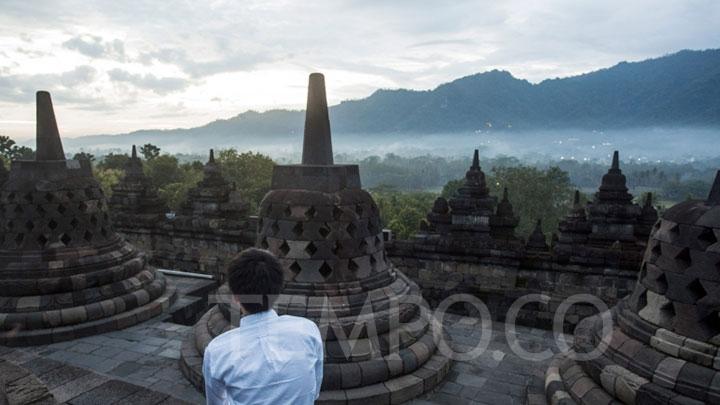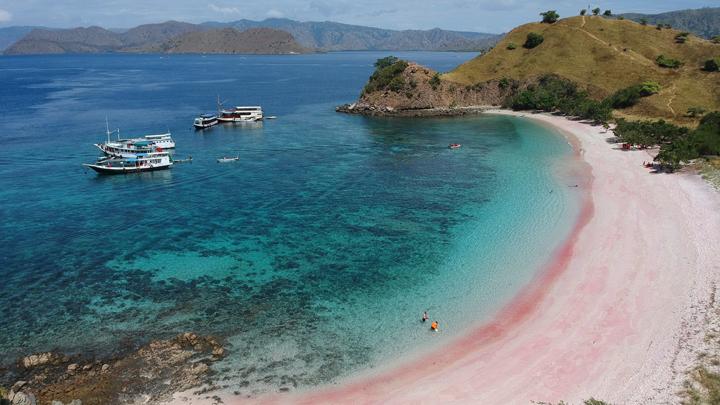Borobudur Closes Several Tourist Areas Due to Visitors Negligence
Translator
Editor
22 February 2020 17:19 WIB

TEMPO.CO, Jakarta - The Borobudur Conservation Office has been limiting tourist visits to the 9th and 10th-floor of its terraces for maintenance activity.
According to Head of the Conservation Section of the Borobudur Conservation Center, Yudi Suhartono, this was triggered by some tourist behaviors that do not support the preservation of the Buddhist temple. One of them is the friction between visitors' footwear and the floor of the temple.
Based on the wear analysis of the stone floor of Borobudur Temple, there is an increase in the rate of wear by 0.3 cm after 2003. The current wear rate is 1.5 cm, meaning that the current rate of wear reached 1.8 cm.
Besides, several vandalism activities such as climbing stupas, scribbling, sliding, gouging, littering, sticking gum on the temple rocks, stubbing cigarettes on the rocks and tucking them in the temple, also skipping on the stupa, touching and resting on the temple reliefs. These behaviors also endanger the sustainability of temple stones.
"Therefore, we plan to limit visits to the Borobudur Temple to only until the 8th floor, while the 9th and 10th floors are closed for public. This policy began on February 13, 2020, "he said.
The restriction is aimed to conduct monitoring to the structure of the terrace stupas and the main stupas of the Borobudur Temple. Borobudur Conservation Center as the UPT under the Directorate General of Culture at the Ministry of Education and Culture has the responsibility as the site manager of Borobudur Temple as a World Heritage.
Borobudur is Indonesia's cultural heritage that holds World Heritage status monitored by UNESCO to maintain its OUV statement. The monitoring is carried out through two mechanisms, namely periodic monitoring and reactive monitoring.
Periodic monitoring is carried out routinely every 6 years which will be evaluated by an Advisory Body and discussed at a World Heritage Committee session. Meanwhile, reactive monitoring is carried out on sites that indicate problems that can threaten the OUV of sites, or when the situation is disturbed or threatened.
Bisnis.com | Galuh Kurnia Ramadhani (Intern Translator)























